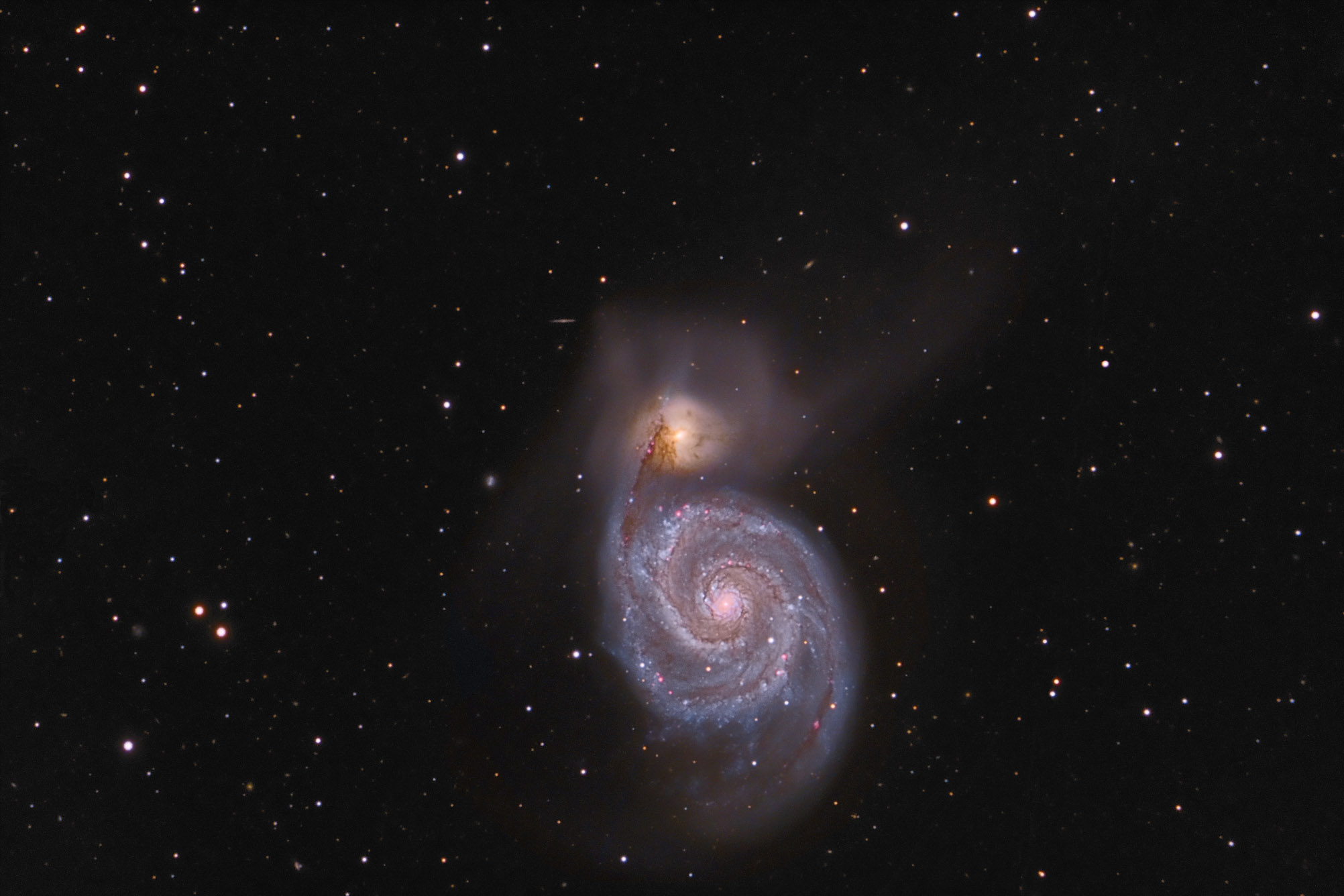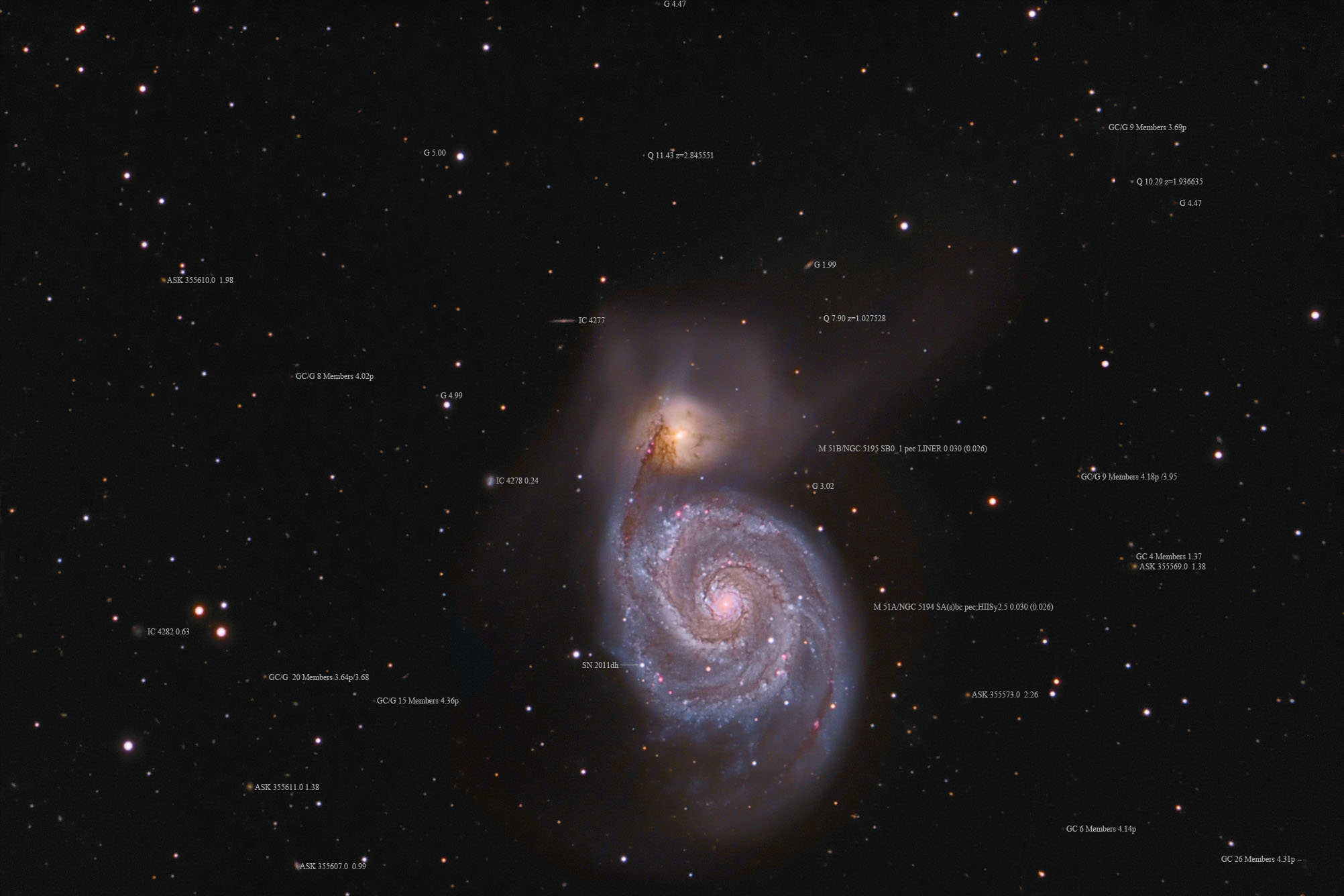| Description | Images |
Object name: ARP085Designation(s): ARP085, M051, NGC5195, Arp 85 is better known as M51, the Whirlpool Galaxy. It is probably the easiest to see as a spiral in an amateur size telescope. Arp put it in his category for Spirals with large, high surface brightness companions. This time the companion is really a companion and they are interacting. Being well studied we know that the larger galaxy, NGC 5194 has passed slightly in front of the smaller, NGC 5195. The interaction has drawn out an arm from NGC 5194 whose dust lanes are seen against NGC 5495 making this smaller galaxy look even stranger than it really is and giving it a red color due to being seen through the dust. NED classifies NGC 5194 as SA(s)bc pec; HII Sy2.5. Seligman agrees though ads a question mark. The NGC project says more simply Sc. NED classifies NGC 5195 as SB01 pec as does Seligman. The NGC Project, however, says SB0-a. Red-shift puts the pair about 30 million light-years distant. NGC 5194 was first seen by Charles Messier on October 13, 1773. The companion wasn't seen as a separate galaxy until March 21, 1781 when Messier's friend Pierre Méchain recorded it. Related Designation(s):11HUGS 340, 1RXS J133001.4+471624, 2MASS J13295952+4715581, 2MASX J13295958+4715580, 2XMM J132959.1+471558, 2XMMp J132959.1+471558, AKARI J1329596+471557, ARP 085, ARP 085 NED02, ARP085, BMW-HRI J132958.2+471613, BMW-HRI J132959.1+471555, BMW-HRI J132959.8+471556, BMW-HRI J133000.1+471558, CGCG 1327.9+4731, CGCG 246-009, CXO J132959.53+471558.0, CXOM51 J132959.5+471559, CXOU J132959.6+471558, HOLM 526, HOLM 526B, IRAS 13278+4731, IRAS F13278+4731, ISOSS J13299+4714, KHG 1-C05, KPG 379, KPG 379B, LDCE 0867 NED138, LGG 347:[G93] 008, M051, MCG +08-25-014, MESSIER 051, MESSIER 051:[MCK2007] 087, MESSIER 051:[WMR2006] XMM5, MESSIER 051b, NGC 5194:[L2011a] X0011, NGC 5194:[RPS97] 07, NGC 5194:[RW2000] X-06, NGC 5195, NGC 5195:[L2011a] X0007, NGC 5195:[LB2005] X01, NGC5195, NSA 163595, PGC 047413, Question Mark Galaxy, Question Mark Galaxy NED02, SSTSL2 J132959.52+471558.4, UGC 08494, UZC J132958.8+471600, VV 001, VV 001b, Whirlpool Galaxy, Whirlpool Galaxy NED02, [CHP2004] J132959.6+471558, [HU2001] J132959.5+471557, [KR2001] G21, [M98j] 170 NED73, [SGT2004] J132959.53+471558.5 , [SLK2004] 0853, [VE75] CL 1327+47, |

